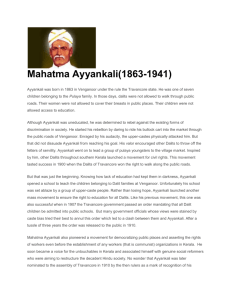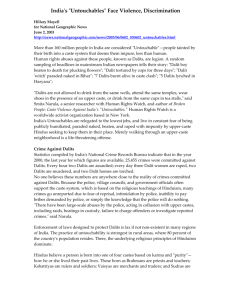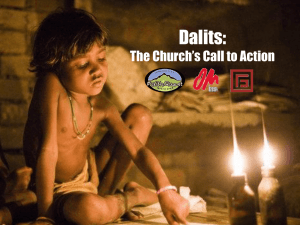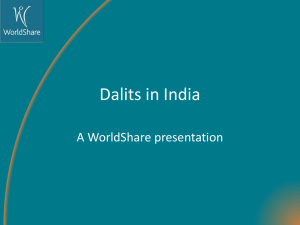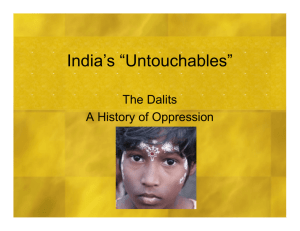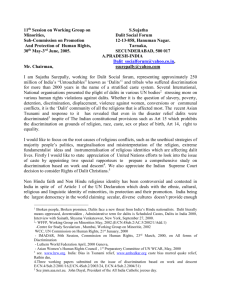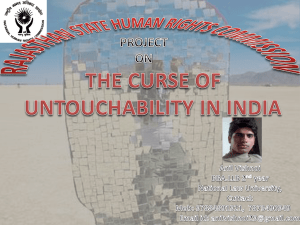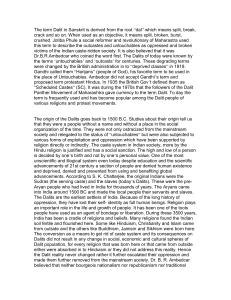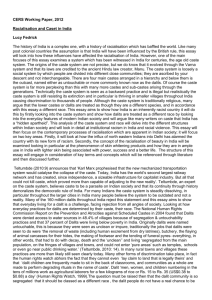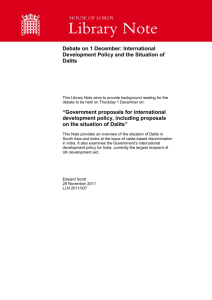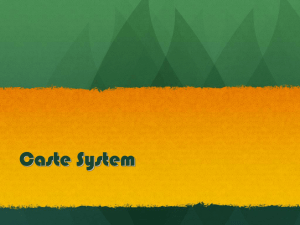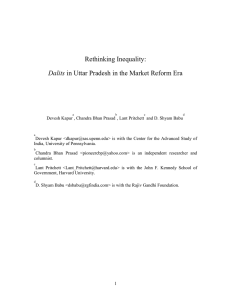presentation
advertisement
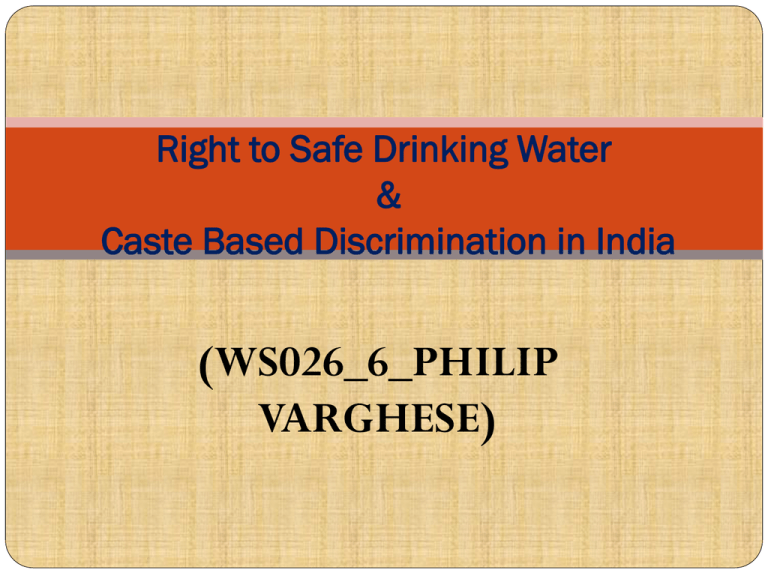
Right to Safe Drinking Water & Caste Based Discrimination in India (WS026_6_PHILIP VARGHESE) Caste System in India Caste system is the social system where people are divided into ‘castes’ (social groups) that are hierarchically organized water tight with no mobility across the order, where rights and obligations of each caste is determined by birth and fixed. The doctrine of inequality is at the core of the caste system as the assignment of rights are unequal with those at the top enjoying the most and those at the bottom with no rights but only obligations Who are Dalits? Dalits are considered to be in the lowest strata and they have been undergoing oppressions since time immemorial. Dalit means “broken people” and is the name the “untouchables” of India have chosen for themselves to signify a growing movement of empowerment, assertion and challenging an oppressive system and the oppressors. Accessibility & Availability of Safe Drinking Water for Dalits Why there is no accessibility of Water for Dalits? Due to the practice of untouchability and stigmatisation of Dalits, water resources are highly controlled by the dominant caste and it is provided according to the wish of dominant caste. By controlling the basic resource of water, thereby they control the daily life of Dalits as well. Discriminatory practices followed on Dalits in access to water Dalits are not allowed to fetch water but non-dalits draw the water for Dalits and pour into their pots. Dalits and non-dalits stand in separate queues at different pulleys of the wells. Dalits are not supposed to touch the pots of non-dalits. Dalits have to fetch water only after non-dalits draw water. In most of the villages separate wells and bore-wells for Dalits and non-dalits are exists. In case of acute shortage of water, non-dalits can fetch water from Dalit water source. But on the contrary if similar situation arise for Dalits, they are denied. In case non-dalits want to fetch water from Dalits’ bore-well they primarily are supposed to clean the bore-well and its surroundings. In case of natural lakes, ponds and tanks Dalits are supposed to fetch from the downstream where non-dalits do not approach. The difference in access to water among dalits . and non dait households 27% dalit households have water sources within premises as compared to 45.2% for the general populations. 19.5% of dalit households have access to drinking water sources away from their premises whereas it stands at 14.45 for the general population. 32.2% of dalit households have access to drinking water from tap as compared to 40.1% for the general population. Non Availability of water for Dalits Systemic Discrimination Infrastructure Inaccessibility Default discrimination by the authority as no extra measures is taken to ensure the availability of water for Dalits. Dalit face discrimination even in disaster relief camps. (Availability of water is not ensured by the authority and the accessibility is controlled by the dominant section of the society.) Problems Dalit Women faces in accessing water. Dalit women face the backlash first while accessing water from a dominant area. Non availability of water prevents Dalits girls from going to school as they have to fetch water for the family from far away places. Promotive Measures to be in place. There is an urgent need for strong legislations in all the caste discriminated countries in South Asia that recognizes drinking water as one of the livelihood rights priorities. As far as India is concerned, amend the SC/ST (Prevention of Atrocities Act, 1989) to include discrimination and violence against Dalits regarding the right to drinking water. A dialogue with governments, relevant UN bodies, the private sector, local authorities, national human rights institutions, CSOs and academic institutions needs to be promoted and sustained with a view to identify, promote and exchange views on best practices related to access to safe drinking water and sanitation. Preparation of a compendium of best practices including nondiscrimination obligations, in relation to access to safe drinking water and sanitation along with a right’s based approach is a very urgent and essential step to be taken to guarantee their basic rights. THANK YOU…
